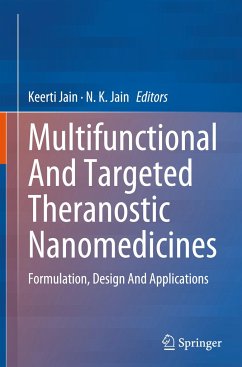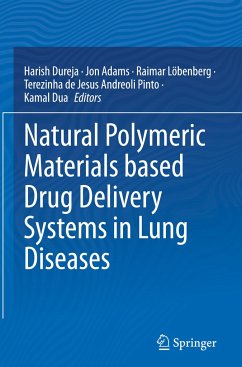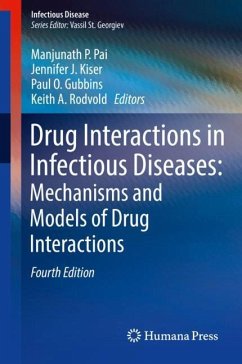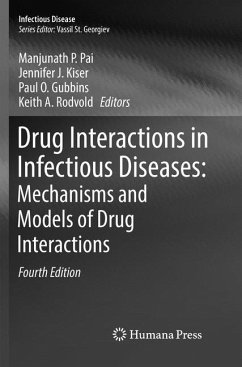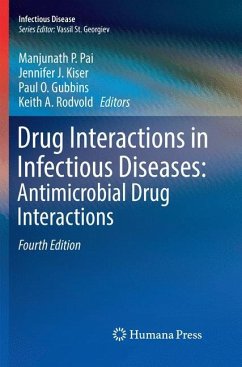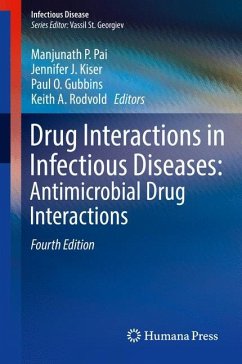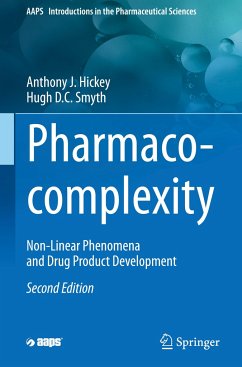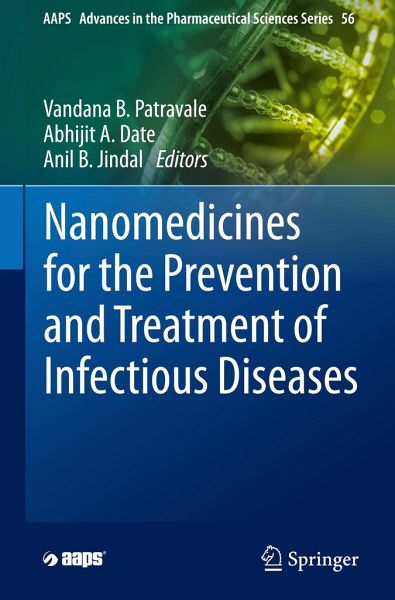
Nanomedicines for the Prevention and Treatment of Infectious Diseases

PAYBACK Punkte
87 °P sammeln!
The COVID-19 pandemic has altered the world and reiterated the perpetual need for the development of effective strategies for the prevention and treatment of infectious diseases. While globally prevalent infectious diseases receive extensive attention in terms of drug development and delivery, the neglected and/or emerging infectious diseases that affect developing countries are often overlooked. Additionally, the therapeutic efficacy of existing anti-infective agents is often limited due to sub-optimal biopharmaceutical properties, sub-therapeutic levels of the drugs at the infection site due...
The COVID-19 pandemic has altered the world and reiterated the perpetual need for the development of effective strategies for the prevention and treatment of infectious diseases. While globally prevalent infectious diseases receive extensive attention in terms of drug development and delivery, the neglected and/or emerging infectious diseases that affect developing countries are often overlooked. Additionally, the therapeutic efficacy of existing anti-infective agents is often limited due to sub-optimal biopharmaceutical properties, sub-therapeutic levels of the drugs at the infection site due to various physiological barriers, the expulsion of the drug by efflux transporters, and the emergence of drug-resistant strains.
From the commercialization of AmBisome® to the emergency authorization of mRNA-based vaccines, nanotechnology has played a vital role in the prevention and treatment of infectious diseases. More importantly, nanotechnology has enabled the effective utilization ofexisting armamentarium against infectious diseases leading to improved therapeutic outcomes with a concomitant reduction in the side effects associated with anti-infective agents. In particular, nanotechnology can bring about a paradigm shift in the management of neglected and emerging infectious diseases and may compensate for the lack of drug discovery efforts. While there are several books dedicated to pharmaceutical and/or biomedical applications of nanotechnology or nanotechnology for cancer therapy a comprehensive book focusing on the prevention and/or treatment of viral, bacterial, fungal, and parasitic infections is not available. This book addresses an unmet need in pharmaceutical and medical education.
This book provides a comprehensive and up-to-date overview of the latest advancements in nanomedicine, which show great potential for preventing and treating infectious diseases. Covering a wide range of topics, it explores various formulation strategies for combating microbial, fungal, parasitic, and viral infections. The book emphasizes the advantages of nano-scale vaccines over traditional ones and discusses their production. It also examines feasible treatment approaches for diseases like malaria, trypanosomiasis, candidiasis, Hepatitis B, HIV, and the ongoing COVID-19 pandemic. Additionally, it highlights the role of nano-adjuvants in vaccine development, as well as the use of peptide antibiotics and pulmonary delivery of drugs, which open up new possibilities in fighting infectious diseases. Furthermore, the book explores the critical role of nanomedicine in addressing veterinary parasitic infections. The emergence of nanotechnology has led to novel strategies for diagnosing, treating, and preventing parasitic infections in animals.
In summary, this book offers a comprehensive description of clinically viable and investigational nanotechnology-enabled medicines (nanomedicines) for the prevention and treatment of globally prevalent, neglected, and emerging infectious diseases.
From the commercialization of AmBisome® to the emergency authorization of mRNA-based vaccines, nanotechnology has played a vital role in the prevention and treatment of infectious diseases. More importantly, nanotechnology has enabled the effective utilization ofexisting armamentarium against infectious diseases leading to improved therapeutic outcomes with a concomitant reduction in the side effects associated with anti-infective agents. In particular, nanotechnology can bring about a paradigm shift in the management of neglected and emerging infectious diseases and may compensate for the lack of drug discovery efforts. While there are several books dedicated to pharmaceutical and/or biomedical applications of nanotechnology or nanotechnology for cancer therapy a comprehensive book focusing on the prevention and/or treatment of viral, bacterial, fungal, and parasitic infections is not available. This book addresses an unmet need in pharmaceutical and medical education.
This book provides a comprehensive and up-to-date overview of the latest advancements in nanomedicine, which show great potential for preventing and treating infectious diseases. Covering a wide range of topics, it explores various formulation strategies for combating microbial, fungal, parasitic, and viral infections. The book emphasizes the advantages of nano-scale vaccines over traditional ones and discusses their production. It also examines feasible treatment approaches for diseases like malaria, trypanosomiasis, candidiasis, Hepatitis B, HIV, and the ongoing COVID-19 pandemic. Additionally, it highlights the role of nano-adjuvants in vaccine development, as well as the use of peptide antibiotics and pulmonary delivery of drugs, which open up new possibilities in fighting infectious diseases. Furthermore, the book explores the critical role of nanomedicine in addressing veterinary parasitic infections. The emergence of nanotechnology has led to novel strategies for diagnosing, treating, and preventing parasitic infections in animals.
In summary, this book offers a comprehensive description of clinically viable and investigational nanotechnology-enabled medicines (nanomedicines) for the prevention and treatment of globally prevalent, neglected, and emerging infectious diseases.



